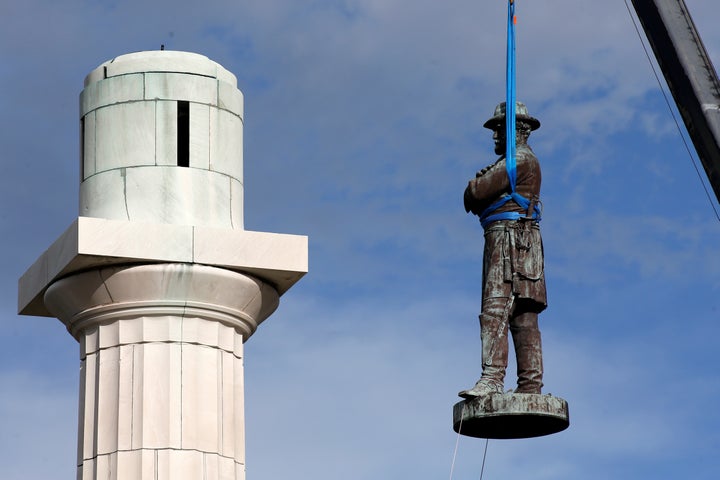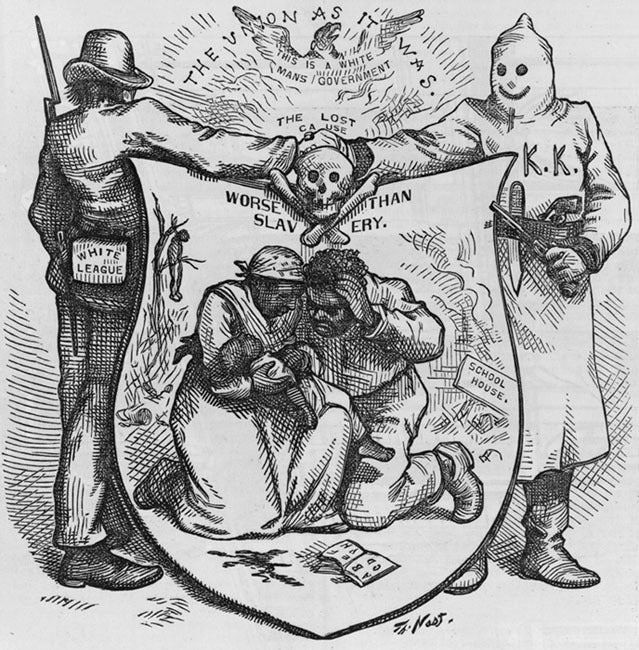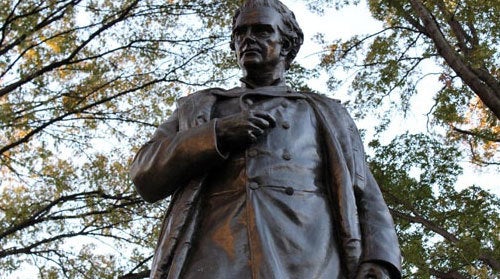
The city of New Orleans recently removed from public display statutes of Confederate Generals P.G.T. Beauregard and Robert E. Lee and Confederate President Jefferson Davis and a monument to an 1874 uprising staged by the local White League. New Orleans Mayor Mitch Landrieu explained the decision to take down the statues that were prominently displayed in public areas. “While we must honor our history, we will not allow the Confederacy to be put on a pedestal in the heart of New Orleans. As we near our City’s 300th anniversary, we must continue to find courage to stand up to hate and embrace justice and compassion.”
Beauregard, Lee, and Davis each betrayed their allegiance to the United States to take up arms in defense of slavery. Pierre Gustave Toutant Beauregard was a Louisiana native, West Point graduate, and Superintendent of the military academy who resigned his commission in the United States Army to lead Confederate forces at the Battle of Bull Run. He also ordered the bombardment of Fort Sumter in Charleston Harbor, the first shots fired in the Civil War. Robert E. Lee, another West Point graduate and Superintendent of the military academy, commanded the Army of Northern Virginia during the Civil War. Jefferson Davis was a U.S. Senator and a Cabinet member before he became president of the Confederacy. Beauregard, Lee, and Davis were all slaveholders.
In September 1874 five thousand members of the White League, a Klan like organization of Confederate army veterans, took over the Louisiana statehouse, an armory, and downtown New Orleans before they were routed by federal troops. At least seven members of the New Orleans police force were killed by the insurgents. No members of the White supremacist militia was every brought up on criminal charges for these acts. In 1891, New Orleans erected a monument to commemorate the insurrection and a racist plaque was added in 1932. The inscription read “McEnery and Penn having been elected governor and lieutenant-governor by the white people, were duly installed by this overthrow of carpetbag government, ousting the usurpers, Governor Kellogg (white) and Lieutenant-Governor Antoine (colored). United States troops took over the state government and reinstated the usurpers but the national election of November 1876 the recognized white supremacy in the South and gave us our state.” The inscription was finally removed in 1993, but the monument remained on display until it was taken down on April 24, 2017.

During Reconstruction cartoonist Thomas Nast denounced the White League and the Klan for creating conditions in the South he called “Worse than slavery.”
Across the South controversy continues over display of the Confederate flag, which the Anti-Defamation League labels a hate symbol. The principal of a New Orleans charter school was suspended after he was pictured at a rally protesting the removal of the Robert E. Lee statue standing next to a Confederate flag. Mississippi is the last state to prominently feature the Confederate image on its state flag. However, in protest, some Mississippi cities will no longer display the flag.
Surprisingly New York City, far from the Deep South and 190 years after New York State ended slavery, still has statues, plaques, and official buildings and parks commemorating supporters of slavery and racism. High schools and school complexes are named after slaveholders Peter Stuyvesant, George Washington, Thomas Jefferson, James Madison, James Monroe, and Francis Lewis, who was also a slave trader. There are monuments to Samuel Cox in Tompkins Square, Samuel Morse in Central Park, and James Gordon Bennett in Herald Square who prominently opposed the abolition of slavery. A park in the Bronx is named after John Mullaly, who was arrested, but not convicted, of inciting the 1863 Draft Riot that led to the death of over 100 people. Many were Black men lynched by mobs. For me, the most offensive statue is the monument to J. Marion Sims in Central Park across the street from Mt. Sinai Hospital. In the 1840s and 1850s Sims conducted experimental gynecological operations on enslaved African women in South Carolina without the benefit of anesthesia or antiseptics.

Statue of J. Marion Sims should be removed from New York Central Park.
In April, Brooklyn Assembly member Charles Barron and twenty-six co-sponsors introduced a bill in the state legislature to establish a committee “to acknowledging the fundamental injustice, cruelty, brutality, and inhumanity of slavery in the city of New York and the state of New York” and to “examine the institution of slavery” and its continuing impact on “living African-Americans and to make recommendations on appropriate remedies.” One recommendation that I would like to see is the renaming of Mullaly Park. It is a few blocks from Yankee Stadium and it would be appropriate to name it after Elston Howard, the first African-American to play for the Yankees and the American League Most Valuable Player in 1963.
New York City has a lot to learn from New Orleans.
Follow Alan Singer on Twitter: https://twitter.com/ReecesPieces8
